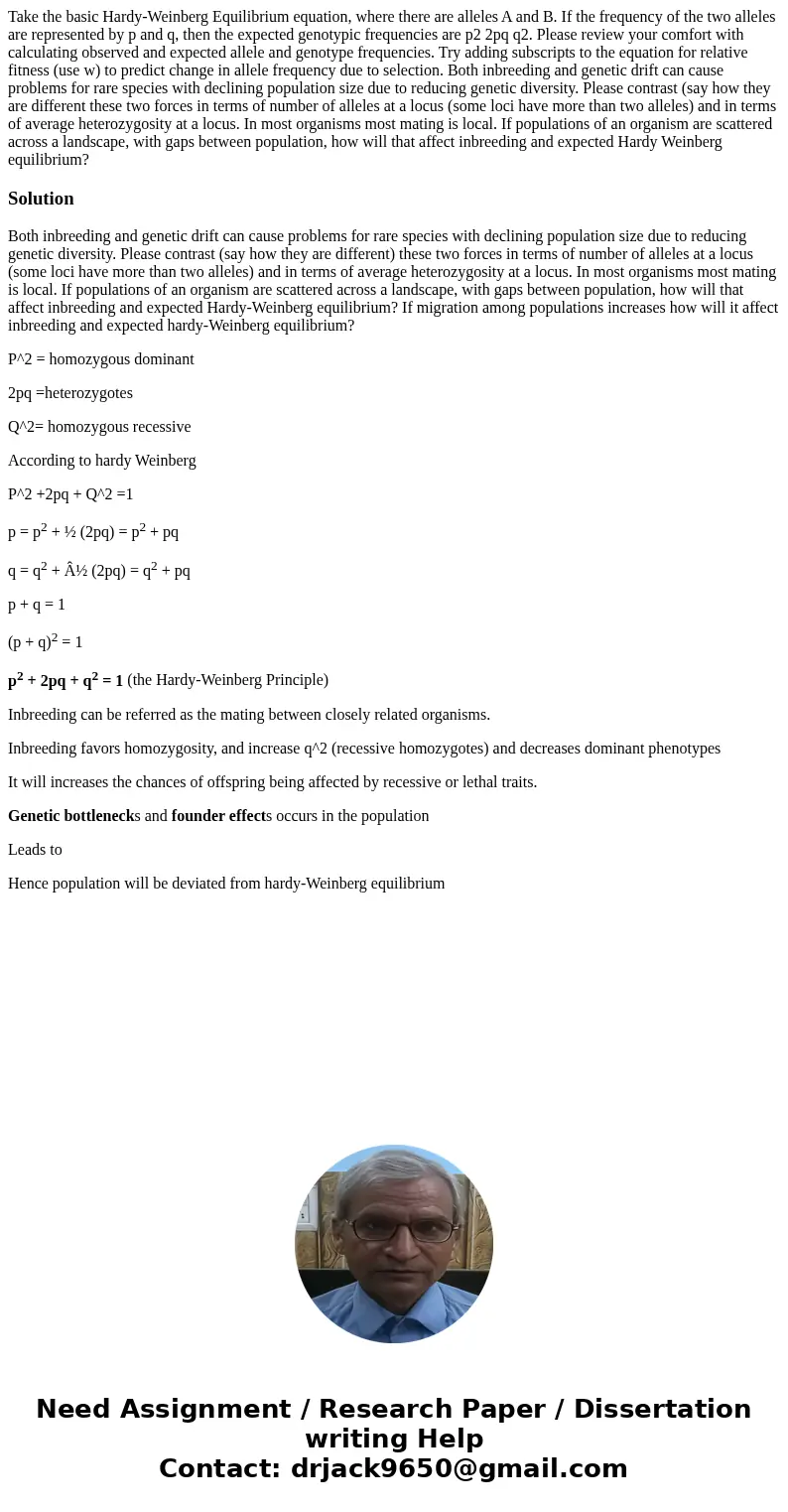Take the basic HardyWeinberg Equilibrium equation where ther
Solution
Both inbreeding and genetic drift can cause problems for rare species with declining population size due to reducing genetic diversity. Please contrast (say how they are different) these two forces in terms of number of alleles at a locus (some loci have more than two alleles) and in terms of average heterozygosity at a locus. In most organisms most mating is local. If populations of an organism are scattered across a landscape, with gaps between population, how will that affect inbreeding and expected Hardy-Weinberg equilibrium? If migration among populations increases how will it affect inbreeding and expected hardy-Weinberg equilibrium?
P^2 = homozygous dominant
2pq =heterozygotes
Q^2= homozygous recessive
According to hardy Weinberg
P^2 +2pq + Q^2 =1
p = p2 + ½ (2pq) = p2 + pq
q = q2 + ½ (2pq) = q2 + pq
p + q = 1
(p + q)2 = 1
p2 + 2pq + q2 = 1 (the Hardy-Weinberg Principle)
Inbreeding can be referred as the mating between closely related organisms.
Inbreeding favors homozygosity, and increase q^2 (recessive homozygotes) and decreases dominant phenotypes
It will increases the chances of offspring being affected by recessive or lethal traits.
Genetic bottlenecks and founder effects occurs in the population
Leads to
Hence population will be deviated from hardy-Weinberg equilibrium

 Homework Sourse
Homework Sourse